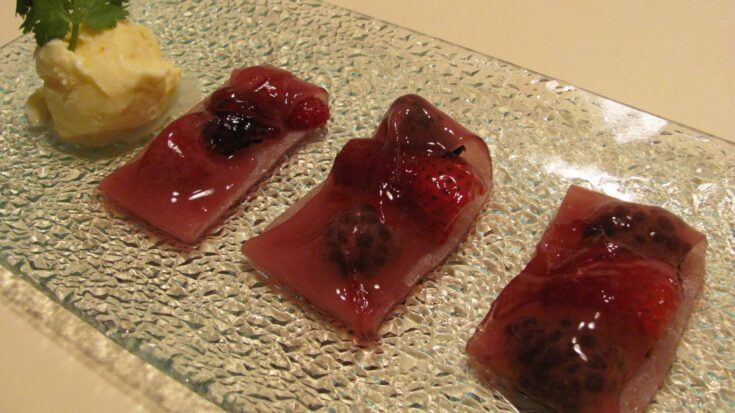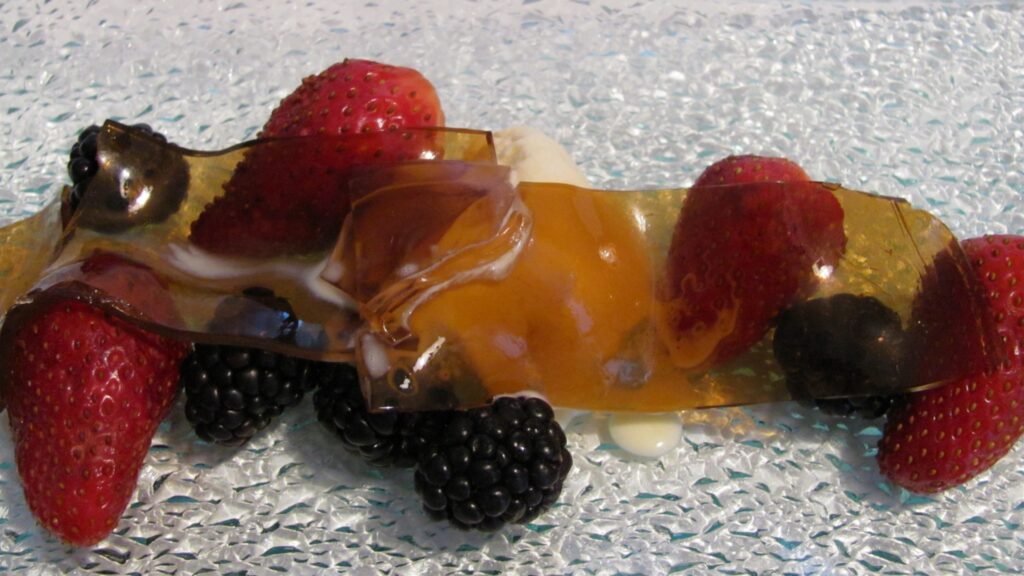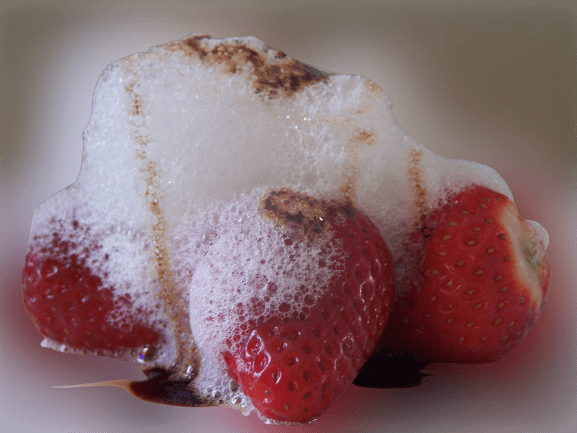Edible films are thin layers made from edible ingredients used for visual effects or adding flavour to a dish or drink. They are part of modernist cuisine cooking methods and the group of solid cocktails. Films have other uses in the food industry; they can improve the shelf life of products by eliminating moisture, microbial growth, and sensory changes. More details about an edible film can be found here.
I used Agar and Sodium Alginate to see the differences between these two methods.
Both recipes are from the Khymos website.
Agar Film:
100 mL of water
1 g agar (1.0 %)
1 g glycerol
Directions:
Dissolve Agar in water. Bring to a boil on low heat for 1 minute. Remove from heat and leave to cool.
When lukewarm, add glycerol. Mix well and pour over a plastic foil to obtain a thin film of Agar, which gels within minutes.
I’ve also tried this recipe without glycerol, and the film forms nicely but is more fragile. It smells and tastes good, though.
I left it overnight in the fridge, and it became more manageable. However, it broke faster and was less flexible than the Sodium Alginate film.
Note: the flaked Agar is stronger than the flavoured ones.
I served the modified sodium alginate recipe as part of a dessert menu, with hot mango ice cream and berries wrapped around with raspberry film.
Raspberry Solid Edible Film

Making Solid Films using Sodium alginate
Ingredients
- 300 gr. raspberry syrup
- 8 oz water – that depends on the viscosity of the syrup
- 1.0% Sodium alginate
- Calcium lactate/gluconate solution for spraying
- 200 ml distilled water
- 10 gr. or 5% Calcium Gluconate
Instructions
- Prepare a 1% sodium alginate solution with the fruit juice.
- Pour onto a flat dish, baking platter, silicone mat, or similar; it needs to be levelled.
- Wait for 5 min before spraying with the CG solution.
- Prepare the calcium lactate solution by blending. Try not to incorporate too much air. Strain and spray onto the alginate film.
Allow several minutes to set.
I also put the film in a convection oven for 15 minutes at 270F and let it cool for a few minutes. The final result is a flexible film with a nice raspberry flavour.
Notes
Small/thin films can be turned around and sprayed from the other side for a faster setting.
After spraying (to evaporate calcium solution), short heating in the microwave gives greater flexibility and strength.



